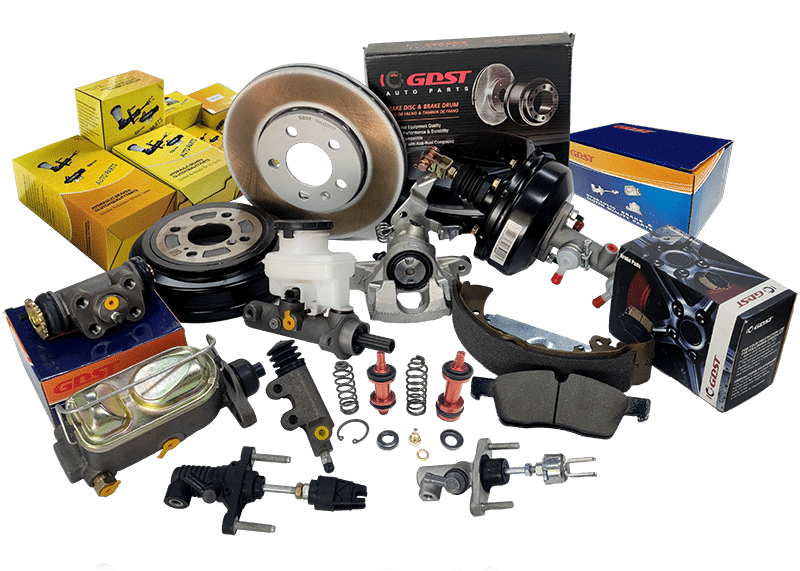Why Is Cleaning Brake Discs Important?

Over time, brake discs collect dust, oil, and debris, which can weaken braking, cause noise, and lead to vibration or uneven braking. Dirt and corrosion also accelerate wear, reducing the discs’ lifespan. Regular cleaning ensures safer, smoother performance and helps maintain customer trust in the brake disc business.
Preparation Before Cleaning
List of tools and materials
- Safety protection: gloves, goggles
- Cleaning tools: soft bristle brush, non-woven/microfiber cloth, compressed air canister (optional)
- Specialized cleaners: brake cleaner (avoid common household cleaners)
- Other tools: jacks, stands (if wheel removal is required)
Important Safety Tips
- Clean the brake discs when they are completely cool.
- Avoid using WD-40 or oil-based cleaners—they leave a residue that reduces braking efficiency.
- Check that the cleaner matches your brake disc material (cast iron, ceramic, etc.).
How to Clean Brake Discs: Step-by-Step Guide

Step1: Removing the Wheels (Optional)
- For a deeper clean, removing the wheels provides better access:
- Loosen the car wheel nuts before lifting the car.
- Use jack stands to safely secure the car.
- Remove the wheels to expose the brake discs.
If you prefer not to remove the wheels, you can still clean the discs through the wheel spokes.
Step2: Initial Cleaning
- Blow away loose dust and debris with compressed air using specialized tools.
- Brush the surface with a soft-bristle brush to dislodge stubborn grime.
- Focus on the disc edges and cooling slots, where dirt often accumulates.
Step3: Applying Brake Cleaner
- Shake the brake cleaner spray well.
- Evenly spray the cleaner over the brake disc.
- Allow the cleaner to sit for 1-2 minutes to dissolve grease and contaminants.
- Wipe the surface of the brake disc with a lint-free cloth or microfiber towel.
- For stubborn stains on the brake disc, gently scrub with a soft brush.
Step4: Drying the Brake Discs
- Many brake cleaners evaporate quickly, eliminating the need for rinsing.
- If rinsing is required, use clean water and dry the disc thoroughly.
- Use compressed air or let the disc air-dry completely before reassembly.
Common Mistakes to Avoid
- Using WD-40 or lubricants – Leaves a residue that reduces braking power.
- Pressure-washing the brakes – This can force water into the bearings, causing damage.
- Ignoring brake pads – Dirty pads can re-contaminate freshly cleaned discs.
If you meet uncertain cleaning steps, consult a professional to avoid danger.
How to Remove Rust & Oil from Brake Discs

Light Rust Removal
- Spray brake cleaner over the affected area.
- Use fine-grit sandpaper (800+ grit) to gently remove surface rust.
- Wipe clean with a microfiber cloth.
Heavy Rust or Deep Corrosion
- If rust is deep, check the brake disc thickness using a caliper gauge.
- If it’s below the manufacturer’s minimum thickness, replacement is necessary.
Oil Contamination
- Identify the source of the oil leak (e.g., caliper seals, axle seals).
- Clean the affected disc thoroughly before testing the brakes.
How Often Should You Clean Brake Discs?

Routine Cleaning
Every 6,000-10,000 km (or during every oil change).
Harsh Conditions (Rain, Mud, Snow)
Every 3,000-5,000 km to prevent rust buildup.
Performance or Track Cars
After every track session remove high-temperature carbon buildup.
When You Notice Issues
If you hear squeaking, grinding or feel brake vibration, it’s time for cleaning.
Regular brake disc cleaning ensures smoother braking, improved safety, and extended lifespan. Whether you’re a brake disc professional or a car enthusiast, consistent maintenance prevents costly repairs and enhances driving confidence.



